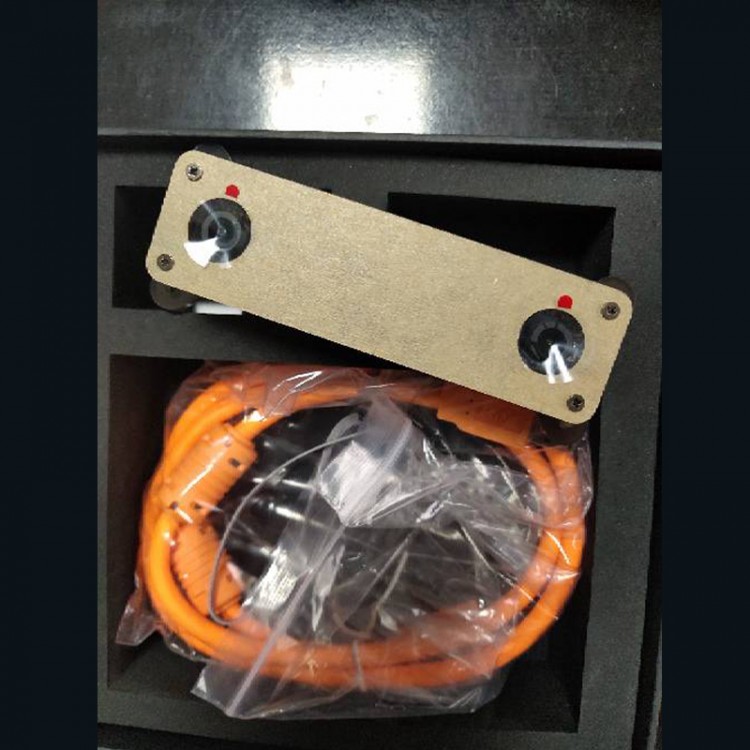
| Quantity | 3+ units | 10+ units | 30+ units | 50+ units | More |
|---|---|---|---|---|---|
| Price /Unit | $293.69 | $287.69 | $278.70 | $266.72 | Contact US |
 BU-5 Bluetooth Module Radio Bluetooth Adapter Unit for Yaesu FTM-150R FTM-510DR Transceiver
$55.79
BU-5 Bluetooth Module Radio Bluetooth Adapter Unit for Yaesu FTM-150R FTM-510DR Transceiver
$55.79
 STF10M1000M-25 RF Power Amplifier 10-1000MHz 25W-30W Wideband RF Amplifier without Radiator and Cooling Fan
$490.69
STF10M1000M-25 RF Power Amplifier 10-1000MHz 25W-30W Wideband RF Amplifier without Radiator and Cooling Fan
$490.69
 STF10M1000M-25 RF Power Amplifier 10-1000MHz 25W-30W Wideband RF Amplifier with Radiator and Cooling Fan
$543.48
STF10M1000M-25 RF Power Amplifier 10-1000MHz 25W-30W Wideband RF Amplifier with Radiator and Cooling Fan
$543.48
Binocular Depth Camera IMU Standard Color Version S2110-95/Color Maximum Range 7M/23FT 1280x400 60FPS
Specifications:
- Model: Standard Color Version S2110-95/Color
- Size: 125x47x26.6mm
- Frame rate: 1280x400 at 10/20/30/60fps; 2560x800 at 10/20/30fps
- Resolution: 1280x400; 2560x800
- Depth Resolution: Based on CPU/GPU Up to 1280*400 at 60FPS
- Support IR: NO
- Viewing angle: D: 112° H: 95° V: 50°
- Color mode: Color
- Pixel size: 3.0 x 3.0μm
- Baseline: 80.0 mm
- Focal length: 2.63mm
- IMU frequency: 200Hz
- Synchronization accuracy: <1ms (up to 0.02ms)
- Depth working distance: 0.60-7m
- Exposure method: Global Shutter
- Power consumption: 1.1W at 5V DC from USB
- Output data format: YUYV
- Interface: USB 3.0
- Time synchronization interface: DF50A
- Product weight: 100.8g
- UVC mode: YES
Software:
- Support operating system: For Windows10, Ubuntu14.04/16.04/18.04, ROS indigo/kinetic/melodic
- SDK address: For https://www.myntai.com/mynteye/standard_color
- Developer Support: SDK
- Open source project support: For ORB_SLAM2, OKVIS, Vins-Mono, Vins-Fusion, VIORB
Surroundings:
- Operating temperature: -15°C to 55°C
- Storage temperature: -20°C to 65°C
- Humidity: 0% to 95% non-condensing
Accuracy:
- Depth measurement accuracy: the error does not exceed 4%
Package Included:
- 1 x Set of Depth Camera
If you want to obtain a better depth effect during regular use of binocular depth cameras, you need to pay attention to the following interference factors:
1. When the camera's working scene is illuminated by other strong light sources including infrared bands, it will interfere with the infrared light emitted by the camera's own infrared optical components, resulting in depth calculation errors. For example, under external environmental conditions, the sunlight in each wavelength band is relatively strong, which will pollute the optical pattern information emitted by the camera itself and affect the measurement results. Or under the condition that the interference light source is relatively strong, the working distance of the infrared optical components will become shorter.
2. If the surface of the object to be measured absorbs light severely, for example, an object with a black outer surface will absorb the pattern of enhanced texture emitted by infrared optical components, resulting in insufficient light received by the camera's optical sensor and unclear imaging, which will affect the measurement result.
3. If the surface of the object to be measured is highly reflective, it is difficult for the reflective area to form feature points, which will affect the measurement result.
4. If the object to be measured is in a scene with relatively bright ambient light, the white balance of the camera will be affected, and overexposure will easily occur, which will affect the measurement results.
5. Operating temperature and humidity. The drastic changes in the temperature and humidity of the external environment will cause condensation on the surface of the camera lens, which will reduce the image resolution of the camera. It needs to be placed for a period of time until the water vapor is completely eliminated before using the camera. Please avoid placing the camera in an environment where the temperature or humidity changes greatly.
Precautions For Use:
When using Binocular Depth Camera, follow the precautions below to get a better depth measurement effect.
1. Use in an indoor environment without strong sunlight to obtain higher depth measurement accuracy.
2. Avoid specular reflection light entering the camera.
3. Keep the camera within a suitable working temperature and humidity range.
4. Keep the camera stable, such as using a stable tripod, tightening screws, etc.
5. If the camera is installed on a moving object and there are vibrations and bumps, it is recommended that the camera installation design should consider shock absorption measures.
6. If the application scene is an outdoor scene, the camera's waterproof and moisture-proof measures need to be considered.